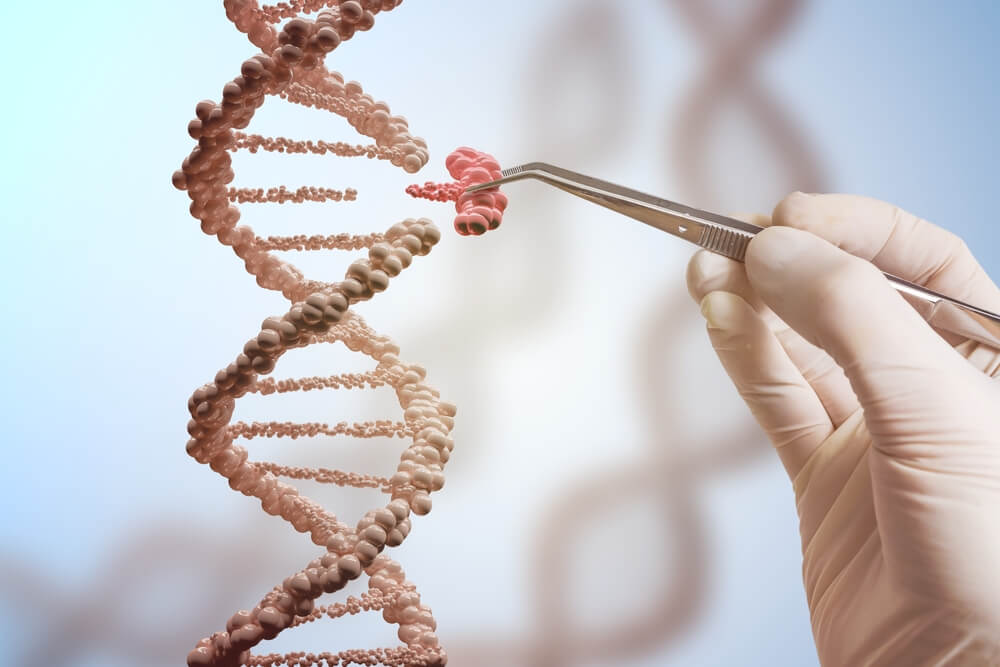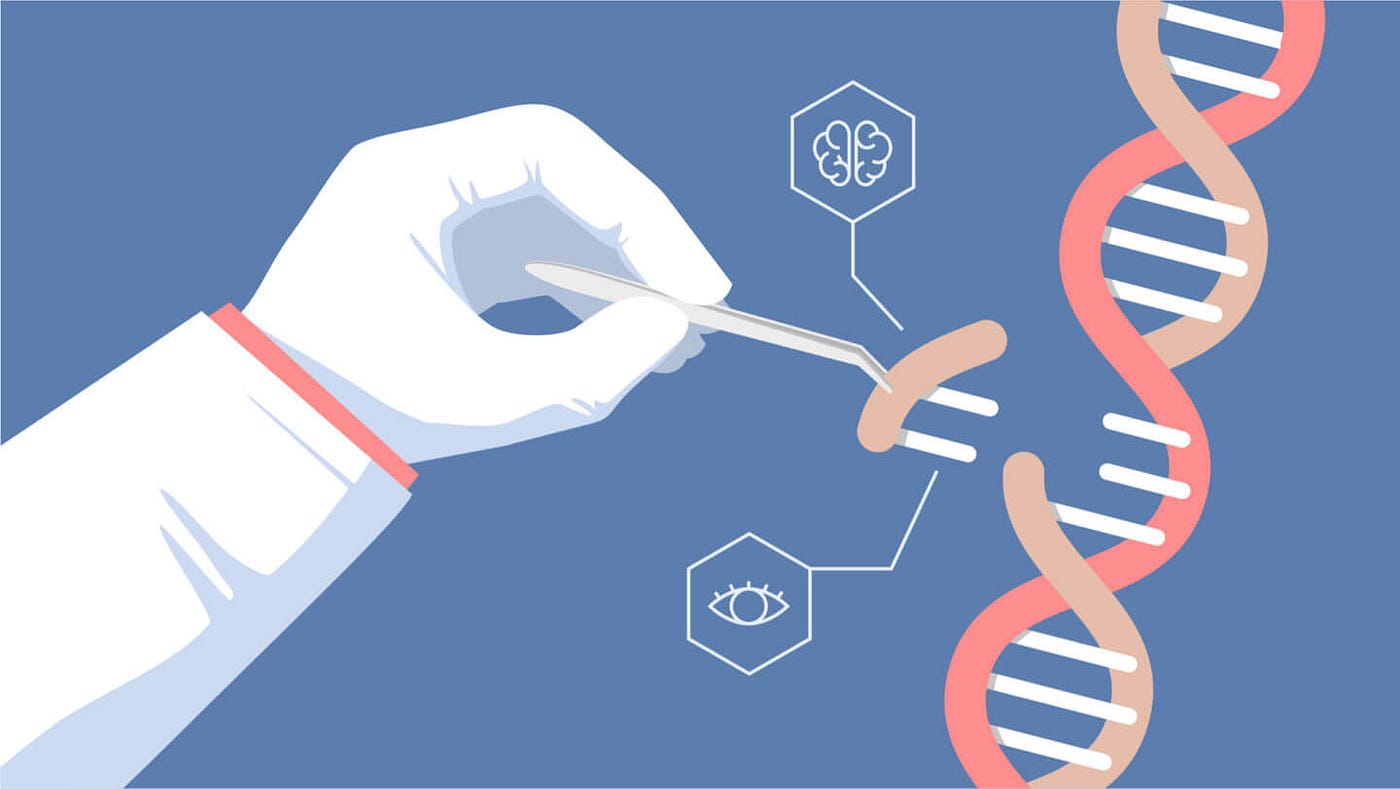Genetic engineering is a scientific process that involves manipulating the genetic material of an organism, usually at the DNA level. It is also known as genetic modification or recombinant DNA technology. Genetic engineering allows scientists to add, delete, or alter genes within an organism’s genome in a precise and controlled manner, leading to changes in the traits or characteristics of the organism.
The genetic engineering process typically involves four main steps:
- 1. Identification and isolation of the gene or DNA sequence of interest.
- 2. Modification or manipulation of the gene or DNA sequence using enzymes or other molecular tools.
- 3. Introduction of the modified gene or DNA sequence into the target organism’s genome.
- 4. Confirmation and analysis of the resulting changes in the organism’s characteristics or traits.
Genetic engineering is used in a variety of applications, including agriculture, medicine, and industry. For example, genetically modified crops can be designed to have increased resistance to pests or herbicides, while genetically modified bacteria can be used to produce chemicals or medicines.
Genetic engineering is a powerful technology and raises ethical and safety concerns, and the long-term impacts of genetic engineering are not yet fully understood. Therefore, it is important to carefully evaluate and regulate the use of this technology.
How is Genetic Engineering Used in Agriculture, Medicine and Industry?
Genetic engineering has many applications in agriculture, medicine, and industry. Here are some examples:
Agriculture: Genetically modified crops (GMOs) are one of the most well-known applications of genetic engineering in agriculture. Genetic engineering is used to introduce certain traits into crops, such as resistance to pests, herbicides, or drought. This can increase crop yields, reduce the need for chemical pesticides, and change the nutritional content of crops.
Medicine: Genetic engineering is used in medicine to produce drugs and therapies. For example, genetically engineered bacteria or yeast is used to produce insulin for the treatment of diabetes. Genetic engineering is used to modify human cells, such as T cells, for use in cancer immunotherapy.
Industry: Genetic engineering can be used to produce enzymes, ‘proteins’, and other molecules for a wide range of industrial applications. For example, genetically modified bacteria can be used to produce biofuels or bioplastics. Genetically modified yeast can be used in the brewing industry to produce new flavours and aromas in beer.

7 Negative Effects of Genetic Engineering
Here are seven negative effects of genetic engineering:
- 1. Environmental risks: The introduction of genetically modified organisms (GMOs) into the environment can have unintended and unpredictable consequences. GMOs can interbreed with wild populations, leading to the spread of modified traits in unintended ways. This can disrupt ecosystems and lead to loss of biodiversity.
- 2. Health risks: The safety of genetically engineered foods is still a subject of debate. Some studies suggest that GMOs may have negative health effects, such as allergic reactions or increased antibiotic resistance.
- 3. Socio-economic issues: The development and use of genetically modified crops can exacerbate existing social and economic inequalities. For example, small farmers may be at a disadvantage if they are locked into contracts with seed companies. Farmers may also be ‘forced’ to plant more GMO seeds or be incentivised to do so at their own disadvantage.
- 4. Ethics and morality: Genetic engineering raises ethical questions about the manipulation of living organisms and the potential consequences for future generations. Some people argue that it is wrong to play God and that genetic engineering could have unforeseen consequences that are difficult to reverse.
- 5. Patenting of life: Genetic engineering has led to the patenting of genes and other living organisms, which some people believe is morally wrong. Patenting can give companies control over the use of genetic information and can limit access to important research.
- 6. Reduction in genetic diversity: The use of genetically modified crops can reduce genetic diversity in agriculture, as farmers rely on a small number of patented strains. This can make crops more vulnerable to pests, diseases, and other environmental stresses.
- 7. Unintended consequences: Genetic engineering can have unintended consequences, such as the spread of modified traits to unintended populations or the development of unexpected side effects. These consequences can be difficult to predict and may have long-term impacts on ecosystems and human health.
In conclusion, genetic engineering is a powerful technology that has some potential benefits. However, there are many risks and negative effects to consider. The use of genetically modified organisms (GMOs) can have serious consequences for the environment, human health, and social and economic inequalities. Ethical questions also arise around the patenting of life and the potential for unfavourable consequences. It’s important to carefully evaluate the risks and benefits of genetic engineering on a case-by-case basis, and to use the technology responsibly. We have to be careful of technologies such as genetic engineering and not minimise their negative effects. It is necessary to look closer – the idea that man can improve upon nature or ‘the creator(s)’ is a fallacy, and so we must hold science and those who push these technology accountable, so as to ensure the safety of our environment and communities.
References
Agriculture:
– National Academies of Sciences, Engineering, and Medicine. (2016). Genetically Engineered Crops: Experiences and Prospects. Washington, DC: The – – National Academies Press. doi: 10.17226/23395
Medicine:
– Choi, Y. H., Lee, J. E., & Park, H. J. (2015). Genetic engineering of T cells for adoptive immunotherapy. Clinical and Experimental Immunology, 181(1), 1-18. doi: 10.1111/cei.12589
– Demain, A. L. (2000). Pharmaceutically active secondary metabolites of microorganisms. Applied Microbiology and Biotechnology, 52(4), 455-463. doi: 10.1007/s002530000439
Industry:
– Stephanopoulos, G. (2012). Synthetic biology and metabolic engineering. ACS Synthetic Biology, 1(10), 514-525. doi: 10.1021/sb300083a
– Hong, M. E., Lee, K. S., Yu, B. J., Sung, Y. J., Park, S. M., & Koo, H. M. (2010). Identification of gene targets eliciting improved alcohol tolerance in Saccharomyces cerevisiae through inverse metabolic engineering. Journal of Biotechnology, 149(1-2), 52-59. doi: 10.1016/j.jbiotec.2010.05.015
This article is copyrighted by Ital is Vital, 2025. Want to re-post this article? Visit our guidelines.
DISCLAIMER: THIS WEBSITE DOES NOT PROVIDE MEDICAL ADVICE
The information, including but not limited to, text, graphics, images and other material contained on this website are for informational purposes only. The purpose of this website is to promote broad consumer understanding and knowledge of various health topics. It is not intended to be a substitute for professional medical advice, diagnosis or treatment. Always seek the advice of your physician or other qualified health care provider with any questions you may have regarding a medical condition or treatment and before undertaking a new health care regimen, and never disregard professional medical advice or delay in seeking it because of something you have read on this website.
